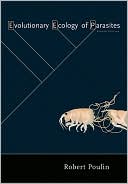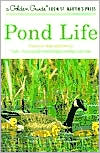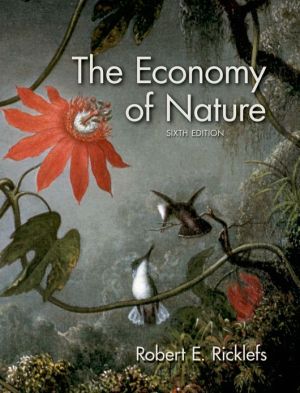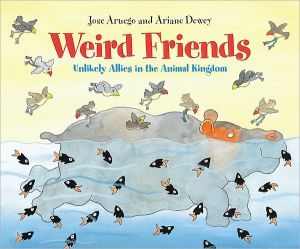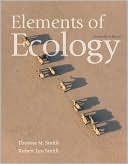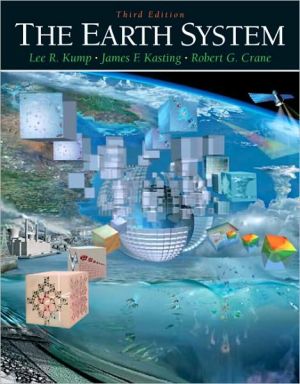Evolutionary Ecology of Parasites: Second Edition
Search in google:
"This excellent book offers much food for thought. The scholarship is as sound as any one human can make it, and the smooth writing carries one along nicely. Evolutionary Ecology of Parasites will not only be a valuable resource in graduate seminars, it will also help researchers get a handle on the literature and the major questions in the field."—Janice Moore, Colorado State University, author of Parasites and the Behavior of Animals"This is an important book. I am glad there is someone out there with the brains and guts to tackle the diverse body of literature summarized here."—Dale H. Clayton, University of Utah Gerald Esch - Journal of Parasitology What a wonderful book! . . . I can heartily recommend this volume for all parasitologists, regardless of their specific research interests, and whether students or teachers. I would also strongly recommend this book for the 'non-parasite' ecologist and evolutionary biologist because it will provide them with a concise picture of how parasites fit into the general scheme of ecology and evolution, something about which they really should know a lot, but many times do not! Poulin does, and explains it well.
Preface ixChapter 1 Introduction 11.1 The Evolutionary Ecology Approach 2 1.2 Scope and Overview 4Chapter 2 Origins of Parasitism and Complex Life Cycles 82.1 Transitions to Parasitism 8 2.2 Specialization of Parasites 11 2.3 Complex Life Cycles: Historical Contingency or Adaptation? 14 2.3.1 Increases in Life-Cycle Complexity 14 2.3.2 Abbreviation of Complex Life Cycles 21 2.4 Evolutionary Consequences of Complex Life Cycles 25 2.4.1 Transmission and Infection 26 2.4.2 Sexual Reproduction 35 2.5 Conclusion 40Chapter 3 Host Specificity 413.1 Measuring Host Specificity 41 3.2 Host-Parasite Coevolution and Host Specificity 48 3.2.1 Macroevolutionary Patterns 48 3.2.2 Microevolutionary Processes 54 3.3 Determinants of Host Specificity 60 3.4 Observed Patterns of Host Specificity 63 3.5 Conclusion 69Chapter 4 Evolution of Parasite Life-History Strategies 704.1 Phenotypic Plasticity and Adaptation 71 4.2 Parasite Body Size 73 4.2.1 Changes in Size as Adaptations to Parasitism 73 4.2.2 Correlates of Body Size 79 4.2.3 Sexual Size Dimorphism in Parasites 85 4.3 Parasite Age at Maturity 87 4.4 Egg Production in Parasites 88 4.4.1 Correlates of Fecundity 89 4.4.2 Trade-offs and Strategies of Egg Production 90 4.5 Conclusion 95Chapter 5 Strategies of Host Exploitation 965.1 The Evolution of Virulence 97 5.1.1 The Theory 98 5.1.2 Empirical Tests 102 5.2 Parasitic Castration and Host Gigantism 110 5.3 Manipulation of Host Behavior by Parasites 114 5.3.1 Adaptive Manipulation? 115 5.3.2 Evolution of Host Manipulation 121 5.3.3 Host Manipulation in a Multispecies Context 126 5.4 Manipulation of Host Sex Ratio by Parasites 130 5.5 Conclusion 132Chapter 6 Parasite Aggregation: Causes and Consequences 1346.1 Measuring Parasite Aggregation 135 6.1.1 Indices of Aggregation 135 6.1.2 Problems with the Measurement of Aggregation 139 6.2 Natural Patterns of Aggregation 141 6.3 Causes of Aggregation 144 6.4 Consequences of Aggregation 150 6.4.1 Effective Population Size and Genetic Diversity 151 6.4.2 Sex Ratio 154 6.4.3 Macroevolutionary Phenomena 158 6.5 Conclusion 159Chapter 7 Parasite Population Dynamics and Genetics 1607.1 Models of Parasite Population Dynamics 161 7.2 Density-Dependent Regulation 166 7.3 Selected Examples of Population Studies 172 7.3.1 The Cestode Bothriocephalus acheilognathi 172 7.3.2 The Nematode Cystidicola cristivomeri 173 7.3.3 The Nematode Cystidicoloides tenuissima 174 7.3.4 The Acanthocephalan Acanthocephalus tumescens 175 7.4 Patterns of Parasite Abundance 177 7.5 Genetic Structure of Parasite Populations 179 7.6 Conclusion 186Chapter 8 Interactions between Species and the Parasite Niche 1888.1 Numerical Responses to Competition 189 8.2 The Parasite Niche 194 8.3 Functional Responses to Competition 195 8.4 Evolutionary Niche Restriction 203 8.5 Conclusion 207Chapter 9 Parasite Infracommunity Structure 2099.1 Species Richness of Infracommunities 210 9.2 Nestedness in Infracommunities 215 9.3 Species Associations among Infracommunities 220 9.4 Species Recruitment and Infracommunity Structure 224 9.5 Species Abundance and Biomass in Infracommunities 227 9.6 Conclusion 231Chapter 10 Component Communities and Parasite Faunas 23310.1 Richness and Composition of Component Communities 234 10.2 Evolution of Parasite Faunas 241 10.3 Species Richness of Parasite Faunas 245 10.4 Biogeography of Parasite Diversity 253 10.5 Host Specificity and the Composition of Parasite Faunas 257 10.6 Conclusion 260Chapter 11 Conclusion 26211.1 Environmental Changes and Parasite Evolutionary Ecology 263 11.2 Parasite Control and Parasite Evolutionary Ecology 265 11.3 Future Directions 267References 271 Index 325
